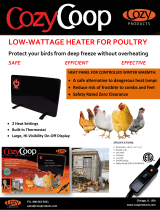
Page 18
Table 2. Required Combustion Air Pipe Material.
COMBUSTION AIR INSTALLATION STANDARDS
MATERIAL UNITED STATES CANADA
ABS ANSI/ASTM D1527
PVC, sch 40 ANSI/ASTM D1785 or D2665 Air pipe material must be chosen
CPVC, sch 40 ANSI/ASTM F441 CPVC, sch 40, ANSI/ASTM, Polypropylene
Polypropylene UL1738, ULC S636. based upon the intended application of the boiler.
Single wall galv. steel 26 gauge
SECTION 4.
Installation
(continued)
4.3 Combustion Air
FT boilers must have provisions for combustion
and ventilation air in accordance with the applicable
requirements for Combustion Air Supply and Ventilation
in the National Fuel Gas Code, ANSI Z223 1; or in
Canada, the Natural Gas and Propane Installation Code,
CSA B149.1. All applicable provisions of local building
codes must also be adhered to.
A FT unit can take combustion air from the space
in which it is installed, or the combustion air can be
ducted directly to the unit. Ventilation air must be
provided in either case.
4.3.1 Combustion Air from Room
In the United States, the most common requirements
specify that the space shall communicate with the
outdoors in accordance with method 1 or 2, which follow.
Where ducts are used, they shall be of the same cross-
sectional area as the free area of the openings to which
they connect.
Method 1: Two permanent openings, one commencing
within 12” (300mm) of the top and one commencing
within 12” (300mm) of the bottom, of the enclosure
shall be provided. The openings shall communicate
directly, or by ducts, with the outdoors or spaces
that freely communicate with the outdoors. When
directly communicating with the outdoors, or when
communicating to the outdoors through vertical ducts,
each opening shall have a minimum free area of 1
square inch per 4000 Btu/hr (550 square mm/kW) of
total input rating of all equipment in the enclosure. When
communicating to the outdoors through horizontal ducts,
each opening shall have a minimum free area of not
less than 1 square inch per 2000 Btu/hr (1100 square
mm/kW) of total input rating of all equipment in the
enclosure.
Method 2: One permanent opening, commencing
within 12” (300mm) of the top of the enclosure, shall
be permitted. The opening shall directly communicate
with the outdoors or shall communicate through a
vertical or horizontal duct to the outdoors or spaces
that directly communicate with the outdoors and shall
have a minimum free area of 1 square inch per 3000
Btu/hr (734 square mm/kW) of the total input rating of
all equipment located in the enclosure. This opening
must not be less than the sum of the areas of all vent
connectors in the conned space.
Other methods of introducing combustion and
ventilation air are acceptable, providing they conform to
the requirements in the applicable codes listed above.
In Canada, consult local building and safety codes or, in
absence of such requirements, follow CAN/CGA B149.1
4.3.2 Ducted Combustion Air
The combustion air can be taken through the wall, or
through the roof. When taken from the wall, it must be
taken from out-of-doors by means of the horizontal wall
terminal. When taken from the roof, a eld-supplied rain
cap or an elbow arrangement must be used to prevent
entry of rain water.
Use ABS, PVC, CPVC, polypropylene, or galvanized
pipe for the combustion air intake. Route the intake
to the boiler as directly as possible. Seal all joints.
Provide adequate hangers. The unit must not support
the weight of the combustion air intake pipe. Maximum
linear pipe length allowed is shown in Table 6. Subtract
5 allowable linear ft. (1.5m) for every elbow used.
The connection for the intake air pipe is at the top of
the unit.
In addition to air needed for combustion, air shall also
be supplied for ventilation, including air required for
comfort and proper working conditions for personnel.























